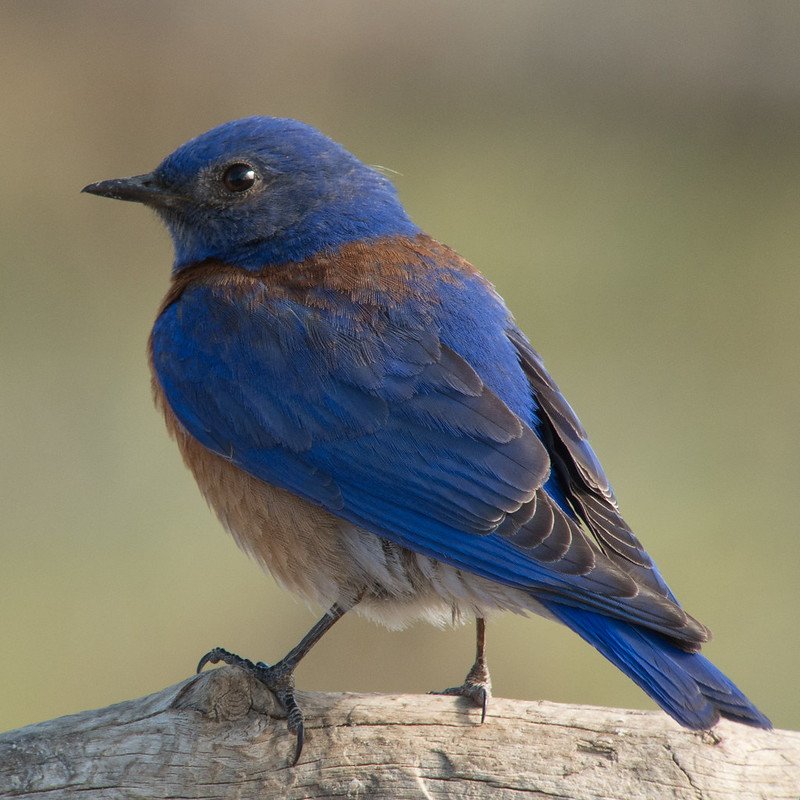Western bluebird, Sialia mexicana is a tiny thrush found throughout North America. Western Bluebirds, together with the more famous American Robin (Turdus migratorius) and the probably less familiar Swainson’s Thrush, are members of the thrush family.
Quick Overview: Sialia Mexicana – Western Bluebird
Body size: Around 7-7.75 in (18-20 cm) and a weight of 28 g (1 oz)
Main colors: Gray, Gray-blue, Blue, Brown
Range: Southwestern United States
Migratory Bird: Yes
Best time of the year to see in the U.S.: All Year (January – December)
Conservation Status: Least Concern
Western Bluebird Description
Male and female western bluebirds are distinguished by their color. Females are less flamboyant than guys. Their abdomens are typically dark, with a gray head, neck, and back. Their tails and wings are a shade of gray-blue. Males are more brilliant. Their head, chin, neck, and tail are all cobalt blue. Males have brown breasts and a grayish-blue abdomen. Juveniles display the same patterns as adults, but with less vivid color.

Size
These birds have a length of 7-7.75 in (18-20 cm) and a weight of 28 g (1 oz). Their wings could range from 11.5-13 in (29-33 cm).
Feeding
Western bluebirds consume a range of things; their primary source of food varies by season. They are insectivorous during the spring and summer months. At this time of year, they are “perch-foragers,” meaning they will search for prey from a perch and then drop to the ground to pick it up. Western bluebirds subsist mostly on fruit during the winter. In the winter, their primary food source is mistletoe berries.
Habitat
Western bluebirds are frequently seen on the outskirts of the woods. Due to the scarcity of perch locations, they prefer burnt and logged regions. Western bluebirds nest in conifer (pine and fir) and deciduous trees (oak). They avoid open spaces such as meadows.
Behavior
Bluebirds of the western hemisphere travel across small distances. Western bluebirds move to their winter nesting locations between July and October, and then return to their spring nesting grounds between February and March. Birds that live at high elevations migrate to lower elevations in search of food throughout the winter. Western bluebirds winter in kin groups (small groups of related birds). These kin groupings serve as a kind of defense against predators. The group’s size is determined by the availability of resources.
Sialia Mexicana Scientific Classification
- Kingdom: Animalia
- Phylum: Chordata
- Subphylum: Chelicerata
- Class: Aves
- Order: Passeriformes
- Family: Turdibae
- Genus: Sialia
- Species: Sialia mexicana
Best time of the year to see
In the United States, the best time of year to see these birds is all year round, regardless of the season. This refers to any month of the year between January and December.
Distribution of the Western Bluebird in the USA
Breeds from British Columbia and western Alberta south to Baja, east throughout the highlands of the west to eastern New Mexico. Spends winters across most of its breeding area, but northernmost populations withdraw southward.
The Western Bluebird can be found in the following states in the United States – Alaska, Arizona, California, Colorado, Idaho, Montana, Nevada, New Mexico, Oregon, Texas, Utah, and Washington.
